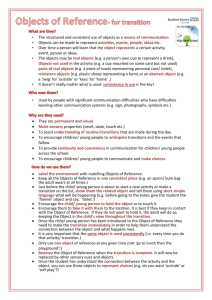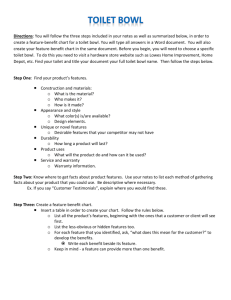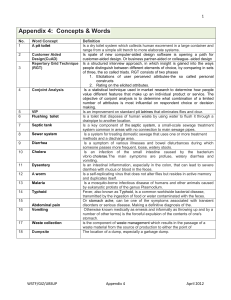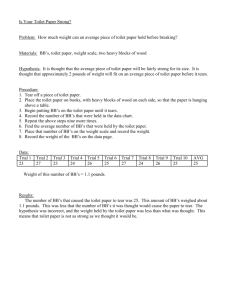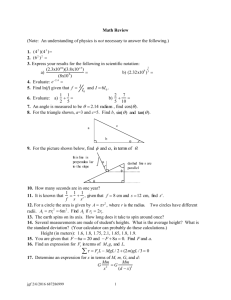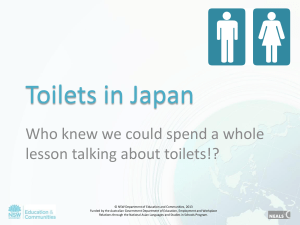Example #5
advertisement
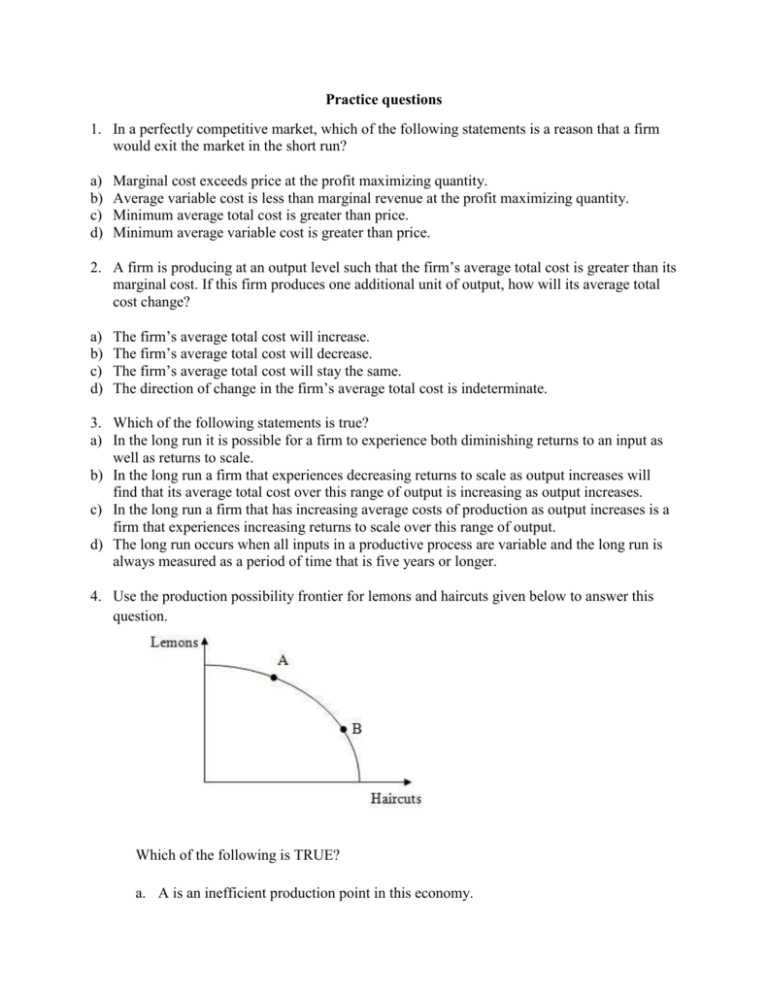
Practice questions 1. In a perfectly competitive market, which of the following statements is a reason that a firm would exit the market in the short run? a) b) c) d) Marginal cost exceeds price at the profit maximizing quantity. Average variable cost is less than marginal revenue at the profit maximizing quantity. Minimum average total cost is greater than price. Minimum average variable cost is greater than price. 2. A firm is producing at an output level such that the firm’s average total cost is greater than its marginal cost. If this firm produces one additional unit of output, how will its average total cost change? a) b) c) d) The firm’s average total cost will increase. The firm’s average total cost will decrease. The firm’s average total cost will stay the same. The direction of change in the firm’s average total cost is indeterminate. 3. Which of the following statements is true? a) In the long run it is possible for a firm to experience both diminishing returns to an input as well as returns to scale. b) In the long run a firm that experiences decreasing returns to scale as output increases will find that its average total cost over this range of output is increasing as output increases. c) In the long run a firm that has increasing average costs of production as output increases is a firm that experiences increasing returns to scale over this range of output. d) The long run occurs when all inputs in a productive process are variable and the long run is always measured as a period of time that is five years or longer. 4. Use the production possibility frontier for lemons and haircuts given below to answer this question. Which of the following is TRUE? a. A is an inefficient production point in this economy. b. The opportunity cost for haircuts is greater at point A than point B. c. The opportunity cost for haircuts is greater at point B than point A. d. B is an infeasible production point in this economy. Use the information below to answer the following two (2) questions. The price of hot dog buns (a complement to hot dogs) increases from $2 to $3. At the same time, the wages of the workers at the hot dog production plant decrease from $14 per hour to $10 per hour. 5. a. b. c. d. What happens to the price of hot dogs? The price of hot dogs decreases. The price of hot dogs increases. The price of hot dogs stays the same. The price of hot dogs is indeterminate. 6. a. b. c. d. What happens to the equilibrium quantity of hot dogs? The quantity sold increases. The quantity sold decreases. The quantity sold stays the same. The quantity sold is indeterminate. 7. Supply for Brewer Baseball Hats is given by Q = 10 + P. Demand for Brewer Baseball Hats is given by Q = 100 - 2P. The State of Wisconsin wants more people to sport Brewers hats and decides to offer a subsidy to induce 80 hats to be sold in the market. What is the cost of this program to the State? a. $4800 b. $5600 c. $60 d. $1200 8. Fill in the blank: When the production possibility frontier between two goods is bowed out from the origin, the opportunity cost of producing a good _________ as more of the good is produced. a. Decreases b. Increases 9. The graph below shows the Production Possibility Frontiers for Ann and Ben. Who has the comparative advantage in producing cheese? a. Ann b. Ben 10. Apple, the manufacturer of iPods, lowers the price of its product to attract new customers. Holding everything else constant, the change in the quantity demanded is a result of: a. A shift to the right of the demand for iPods b. A movement along the demand curve 11. Suppose the following two events happen simultaneously: EVENT 1: Consumers think that the price of toilet paper will increase significantly in the near future. EVENT 2: Hurricane Atsuko destroys half of the nation’s oil and toilet paper production facilities. What happens to the equilibrium price and quantity of toilet paper? a. The price of toilet paper rises, and the quantity of toilet paper falls. b. The price and quantity of toilet paper both increase. c. The quantity of toilet paper rises, but the price of toilet paper could rise or fall. d. The price of toilet paper rises, but the quantity of toilet paper could rise or fall. Jack and Kate are "Lost" on an island. On this island the two most essential things for them to do are to build fire and to find water. The following table describes the lengths of time that the two take with these tasks. 12. Which of the following statements are true? I. Kate has the absolute advantage in fire production II. Kate has the absolute advantage in finding water III. Jack has the comparative advantage in finding water a. I b. II c. III d. I and II e. I and III 13. Suppose two countries engage in trade. To maximize total output, each country should produce the good for which it has: a. Absolute advantage b. Comparative advantage 14. Assume that Wisconsin and Illinois only produce and consume milk and corn, and that Wisconsin has absolute advantage in both milk and corn production. Can Wisconsin still benefit from trading with Illinois? a. Yes b. No 15. Suppose Footland produces socks which it trades for leg warmers produced in Kneeland. Currently Footland trades 4 pair of socks for 1 set of leg warmers. Which of the following statements is certain to be true? a. Footland has an absolute advantage in producing socks. b. Footland’s opportunity cost of producing a pair of socks is less than or equal to ¼ a set of leg warmers. c. Kneeland’s opportunity cost of producing a set of leg warmers is greater than or equal to 4 pairs of socks. d. Kneeland’s opportunity cost of producing a pair socks is less than Footland’s opportunity cost of producing a pair of socks. 16. Alex spends all his money on apples and raspberries. The price of apples and raspberries falls by 50%. At the same time, Alex’s income falls by 50% of its original value. As a result, Alex’s budget constraint a. Shifts inward toward the origin. b. Remains unchanged. Answer Key D B B B D A A B B B D E B A B B
